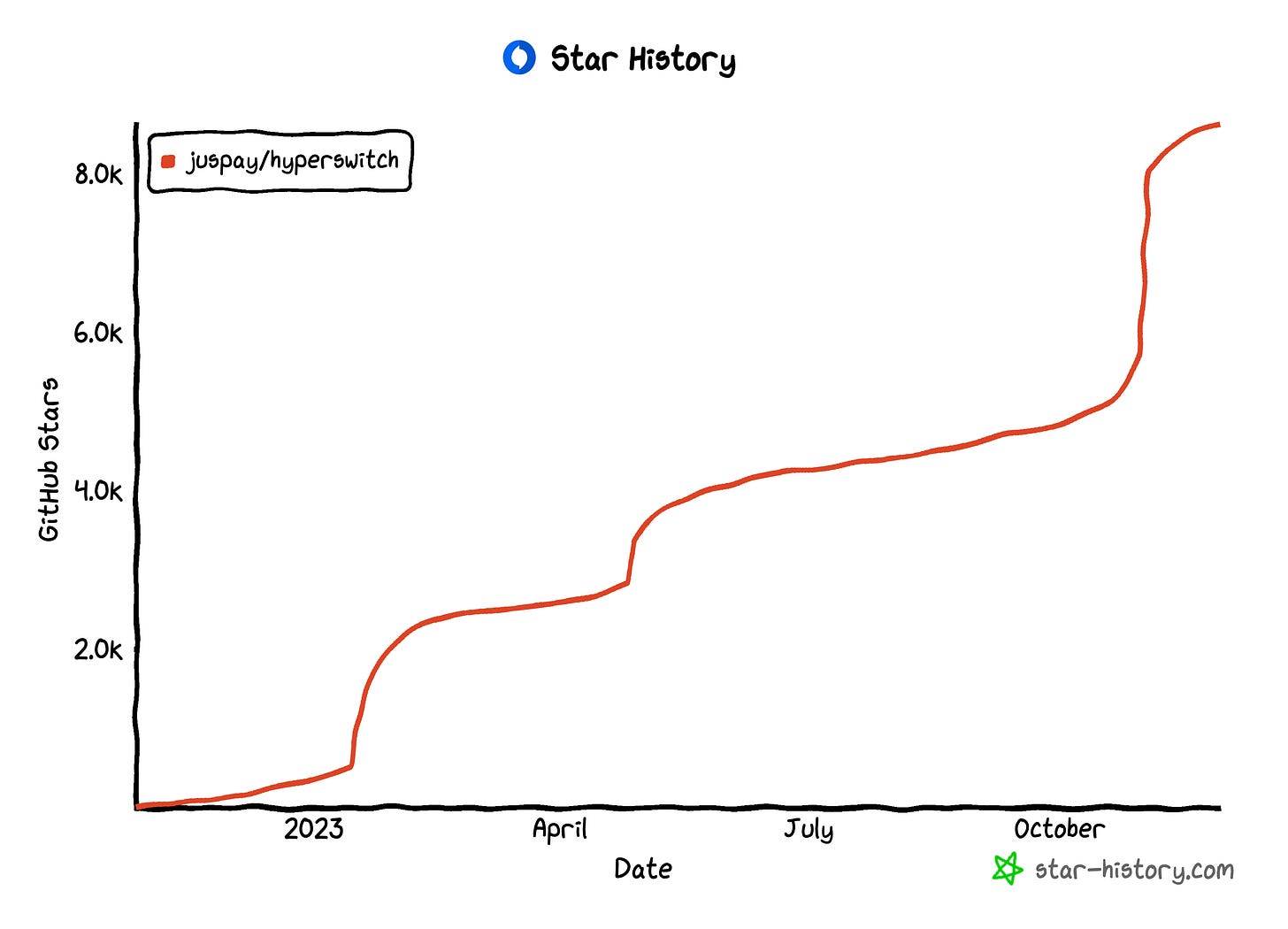DevTools Brew #39: InfluxDB: From Open Source Time Series Database to Millions in Revenue
Hey folks, welcome to DevTools Brew #39!
If you're new here, my name is Morgan Perry, co-founder of Qovery, and every Saturday, I share the stories, strategies, and insights behind the most successful devtool companies.
In this Issue #39:
📈 InfluxDB: From Open Source Time Series Database to Millions in Revenue
⭐ Star History Weekly Pick
I hope you will enjoy this new edition.
Let's dive in!
📈 InfluxDB: From Open Source Time Series Database to Millions in Revenue
Today, let’s explore the fascinating journey of InfluxDB, an inspiring narrative of strategic pivots and unparalleled success in the open-source space. From its humble origins as a closed-source SaaS product to becoming a trailblazing open-source initiative, InfluxDB has redefined the landscape, meeting the demands of a niche market and forging ahead to generate millions in revenue. Let's dive into the journey of InfluxDB, shared by its co-founder & CTO, Paul Dix👇
Key Takeaways
Origins and Pivot to Open Source
Errplane's Evolution: Founded in 2012 by Paul Dix as Errplane, an initial closed-source SaaS product aimed at real-time metrics and monitoring.
Pivotal Decision: By 2013, Errplane wasn't gaining traction. The team recognized the potential of the time-series infrastructure they'd developed for broader applications.
InfluxDB Emergence: InfluxDB was born in September 2013, utilizing the existing infrastructure to craft a standalone time-series database engine, addressing a gap in the open-source community.
Market Void Identification: Observing Graphite's stagnant progress despite a considerable following, InfluxDB spotted the need for a more progressive, actively developed time-series database project.
Catering to a Specific Market
Market Disparity: Existing commercial offerings catered to high-frequency trading with small data series, neglecting applications with slower-moving but vast amounts of time-series data, such as sensor or server-monitoring data.
InfluxDB's Niche: Filling the void, InfluxDB aimed to serve the demand for handling large-scale, slower-moving time series, a niche untouched by competitors at the time.
Differentiation from Graphite
Graphite's Limitations: Graphite's limitation in handling event data time series inspired InfluxDB to specialize in managing logs, exceptions, and various other data types, aiming for a broader application spectrum.
Usability Focus: Recognizing the critical role of user experience, InfluxDB drew inspiration from MongoDB's developer-centric approach, prioritizing ease of use and developer productivity.
Open Source Strategy and Initial Development
Strategic Approach: InfluxDB's strategy revolved around initially creating an open-source project, prioritizing building popularity before devising a monetization plan.
User-Friendly Launch: The early version of InfluxDB was user-friendly, adopting an MIT-licensed open-source model and ensuring accessibility and simplicity for developers.
Commercial Transition and Challenges
Balancing Act: The transition involved maintaining open source integrity while introducing a commercial offering for clustering, which sparked both interest and criticism within the community.
Ensuring Viability: The decision to focus on the commercial, clustered version was vital for ensuring consistent revenue generation and the company's sustainability.
Commercial Success and Expansion
Growth Trajectory: Shifting focus toward the commercial version propelled revenue growth, facilitating successful funding rounds and marking significant milestones in user base expansion.
Community Growth: The open source community saw a massive expansion, growing from 10,000 servers in 2016 to over 400,000 single servers at present, underscoring the project's popularity.
InfluxDB Iox: A New Venture
Rust-powered Innovation: The announcement of InfluxDB Iox signifies a new core time series engine, harnessing the power of Rust to cater to larger-scale analytical queries.
Hybrid Cloud Solution: Introducing a cloud-based solution that complements the open-source version, aimed at simplifying operations without sacrificing open-source functionalities.
InfluxDB's evolution from Errplane to a groundbreaking open-source time-series database embodies a journey of innovation and market foresight. Transitioning strategically from open source to a commercial model drove revenue and community growth. InfluxDB's narrative underscores the potency of adaptive innovation and community-driven development in the open-source world.
—> To explore more, read the full story here - published initially on HackerNoon by Flagsmith.
⭐ Star History Weekly Pick
The Star History Weekly Pick is:
Hyperswith: “An open-source payments switch written in Rust to make payments fast, reliable and affordable.”
⭐️ 8.6 stars reached
It’s already over! If you have any comments or feedback, you can reach out to me on LinkedIn or Twitter.
Thanks for reading,
Morgan
There are no ads in my newsletter. All I ask is you subscribe, share, and enjoy! :)





